
伤口世界
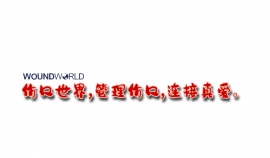
- 星期一, 13 11月 2023
Electrical stimulation-based conductive hydrogel for immunoregulation, neuroregeneration and rapid angiogenesis in diabetic wound repair
Lin Guan1 , Xiaolan Ou2 , Ze Wang1 , Xingchen Li1 , Yubin Feng1 , Xinting Yang1 , Wenrui Qu2* , Bai Yang1 and Quan Lin1*
ABSTRACT Diabetic wounds are hard-healing chronic
wounds, mainly caused by wound infection, excessive inflammation, diabetic neuropathy, and peripheral vascular disease. Hence, comprehensive improvement of diabetic wound healing is of great significance in clinical practice. However, the current research on diabetic wounds mainly focuses on wound infection and angiogenesis, lacking the exploration of neuroregeneration and immunomodulation. In this study, we develop a multifunctional conductive hydrogel (PACPH) based on polydopamine-modified silver nanoparticles (AgNPs@PDA), cellulose nanocrystals (CNC)/polypyrrole (PPy) composites, and polyvinyl alcohol as an efficient wound dressing. The PACPH scaffold features multiple functions, including desirable mechanical properties, tissue adhesion, conductivity, and broad-spectrum antibacterial activity. Inspired by the endogenous electric field, the strategy of combining hydrogel with electrical stimulation (ES) is also proposed to accelerate the healing of diabetic wounds. Notably, the participation of ES can effectively promote nerve repair, realize the polarization of macrophages toward the M2 phenotype, and rapid angiogenesis, comprehensively improving the healing of diabetic wounds. This advanced collaborative strategy opens a new avenue in treating diabetic wound.
Keywords: chronic diabetic wound, conductive hydrogel, electrical stimulation, wound dressing, neuroregeneration
1 State Key Laboratory of Supramolecular Structure and Materials, College of Chemistry, Jilin University, Changchun 130000, China
2 Department of Hand Surgery, The Second Hospital of Jilin University, Changchun 130041, China
* Corresponding authors (emails: 该Email地址已收到反垃圾邮件插件保护。要显示它您需要在浏览器中启用JavaScript。 (Qu W); 该Email地址已收到反垃圾邮件插件保护。要显示它您需要在浏览器中启用JavaScript。 (Lin Q))
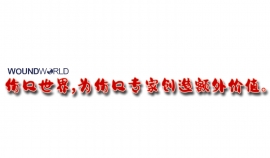
- 星期五, 10 11月 2023
Updates in the management of cardiovascular disease
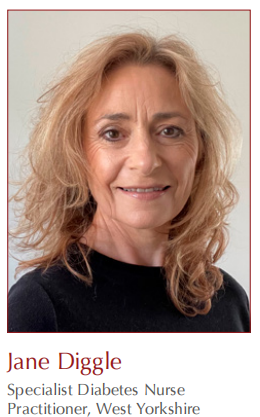
Citation: Diggle J (2023) Updates in the management of cardiovascular diabetes. Diabetes & Primary Care 25: 145–7
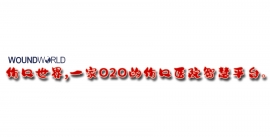
- 星期四, 09 11月 2023
A multisectoral and multidisciplinary endeavor: a review of diabetes self-management apps in China
Meifang Chen1*, Daniel Weissglass2 , Chengyi Li3 , Di Li3 , Zixuan Wu3 and Li Zhang4
Abstract
Background While the use of self-management apps has considerable promise to efficiently reduce the diabetes burden that disproportionally affects low- and middle-income countries (LMICs), and the multisectoral and multidisciplinary approaches have been encouraged to be used in diabetes management, little is known about the status of the integration of these approaches in the existing diabetes self-management apps. This review examines the diabetes apps in China as an indication of the current status of integrating multisectoral and multidisciplinary approaches in diabetes mHealth care in LMICs.
Methods Eligible diabetes apps were searched on major Chinese app stores up to December 23, 2022. The app comprehensiveness index (ranging 0–80) regarding the app functions and diabetes management domains was created. The multisectoral and multidisciplinary features were summarized using indices derived from current guidance.
Results Sixty-six apps were reviewed, all developed by private companies. The average comprehensiveness score was 16, with many major self-management domains and functions not represented among the reviewed apps. Forty apps (61%) involved multiple sectoral entities, with public/private and private/private collaborations being the most common collaborative combinations. Thirty-seven apps (56%) involved multiple disciplines, among which endocrinology/metabolism, nutrition, and cardiovascular medicine were the top three most common disciplines. Compared to non-multidisciplinary apps, multidisciplinary apps tended to provide more comprehensive services in apps (6.14 vs. 5.18, p=0.0345). Different sectors and disciplines tended to work independently, without robust interactions, in providing diabetes management services in the reviewed apps.
Conclusion Multisectoral and multidisciplinary features has presented in the current diabetes self-management apps in China; however, it is still in its infancy and significant limitations existed. More engagement of civil society organizations and community groups and innovative collaborations between sectors and disciplines are needed to provide comprehensive, continuous, and patient-centered mHealth care for patients with diabetes in LMICs like China. Clear guidance for integrating and evaluating the multisectoral and multidisciplinary efforts in self-management apps
is necessary to ensure the effective use of mHealth solutions for diabetes management in LMICs.
Keywords Diabetes, Self-management, Multisector, Multidisciplinarity, LMICs, China, mHealth
*Correspondence:
Meifang Chen
该Email地址已收到反垃圾邮件插件保护。要显示它您需要在浏览器中启用JavaScript。
Full list of author information is available at the end of the article
© The Author(s) 2023. Open Access This article is licensed under a Creative Commons Attribution 4.0 International License, which permits use, sharing, adaptation, distribution and reproduction in any medium or format, as long as you give appropriate credit to the original author(s) and the source, provide a link to the Creative Commons licence, and indicate if changes were made. The images or other third party material in this article are included in the article’s Creative Commons licence, unless indicated otherwise in a credit line to the material. If material is not included in the article’s Creative Commons licence and your intended use is not permitted by statutory regulation or exceeds the permitted use, you will need to obtain permission directly from the copyright holder. To view a copy of this licence, visit http://creativecommons.org/licenses/by/4.0/. The Creative Commons Public Domain Dedication waiver (http://creativecommons.org/publicdomain/zero/1.0/) applies to the data made available in this article, unless otherwise stated in a credit line to the data.
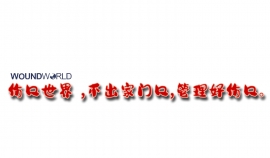
- 星期三, 08 11月 2023
Association between timing and consistency of physical activity and type 2 diabetes: a cohort study on participants of the UK Biobank
Caiwei Tian1 · Charlyne Bürki2,3 · Kenneth E. Westerman4,5,6 · Chirag J. Patel2
Received: 10 April 2023 / Accepted: 13 July 2023
© The Author(s)
Abstract
Aims/hypothesis We sought to quantify the relationship between morning, afternoon or evening physical activity and consistency (e.g. routine) and risk of type 2 diabetes.
Methods A cohort of 93,095 UK Biobank participants (mean age 62 years) without a history of type 2 diabetes wore a wrist-worn accelerometer for 1 week. We converted accelerometer information to estimate metabolic equivalent of task (MET), summing MET h of total physical activity completed within three intra-day time segments (morning, afternoon and evening). We quantified physical activity consistency as the SD of participants’ daily total physical activity. We ultimately associated each of the following with incident type 2 diabetes: (1) morning, afternoon or evening ‘time-segmented’ MET h per week; and (2) consistency. We also considered moderate-to-vigorous physical activity (MVPA) and vigorous physical activity (VPA) in association with type 2 diabetes incidence.
Results When considering MET as the physical activity measure, we observed protective associations of morning (HR 0.90 [95% CI 0.86, 0.93], p=7×10−8) and afternoon (HR 0.91 [95% CI 0.87, 0.95], p=1×10−5) but did not have evidence for evening physical activity (HR 0.95 [95% CI 0.90, 1.00], p=0.07) with type 2 diabetes. There was no difference between MET-measured morning and afternoon physical activity. Our substitution model highlighted the importance of adjusting for lifestyle factors (e.g. sleep time and diet); the effect of a substitution between afternoon and evening physical activity was attenuated after adjustment for lifestyle variables. Consistency of MET-measured physical activity was not associated with type 2 diabetes (p=0.07). MVPA and VPA were associated with decreased risk for type 2 diabetes at all times of the day.
Conclusions/interpretation Total metabolic equivalents of physical activity in the morning and afternoon had a protective effect on diabetes risk and evening activity was not associated with diabetes. Consistency of physical activity did not play
a role in decreasing risk for diabetes. Vigorous activity is associated with lower risk no matter the time of day of activity.
Keywords Exercise routine · Lifestyle factors · Physical activity · Type 2 diabetes
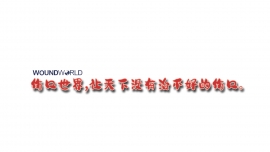
- 星期五, 03 11月 2023
Demonstrating the clinical efficacy of a multi-modality approach to managing various wound aetiologies
The article highlights the major challenge of limb amputation in the Caribbean and its effects on the patient’s quality of life, stressors on the family and the burden on the healthcare system. Four clinical cases are presented with various wound aetiologies and comorbidities; these patients were candidates for limb amputation. A reassessment of the traditional wound management approach paradigmatically shifted to a new strategy. This strategy includes clinically effective, easy-to-apply, and affordable products that help to reduce limb amputation, resulting in limb salvage.
Authors:
Larry G. Baratta and Yvonne Braithwaite Superville
Larry G. Baratta is International Medical Director, Chief Medical Officer - World Wide Wound Care, LLC;
Yvonne Braithwaite is Chief Executive Officer - Rovon Foot and Wound Care Clinic
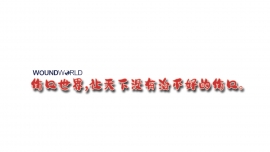
- 星期四, 02 11月 2023
Zero All Preventable (ZAP) amputations: FDUK position statement on “missingness” and reducing major amputations in the acute diabetes foot pathway
The Foot in Diabetes UK Zero All Preventable (ZAP) Amputations group is dedicated to minimising the occurrence of preventable lower limb amputations. This position statement aims to address the existing gap in delivering foot care services for individuals with diabetes and emphasises the critical necessity of prompt access to specialised foot care services to prevent delays and missed appointments. Moreover, it highlights the individual factors that can hinder or impede people with diabetes from seeking appropriate and timely foot care, encompassing psychological challenges and limitations of health literacy. Additionally, this paper explores recent advances in psychological strategies to mitigate the impact of distress on diabetes foot care.
Author:
Jayne Robbie, Catherine Bewsey, Duncan Stang, Andrew Sharpe, Louise Morris, Krishna Gohil, Christian Pankhurst and Michael Edmonds
Jayne Robbie is Senior Podiatrist, University Hospitals NHS Trust and Senior Lecturer, Birmingham City University, Birmingham, UK;
Catherine Bewsey is Chartered Counselling Psychologist, SWL ICS Foot Network Project, St George’s University Hospitals NHS Foundation Trust;
Duncan Stang is National Diabetes Foot Co-ordinator, Scotland;
Andrew Sharpe is Advanced Podiatrist, Salford Royal NHS Foundation Trust, UK;
Louise Morris is Principal Podiatrist, Trafford Local Care Organisation Podiatry Department, Trafford General Hospital, Manchester, UK;
Krishna Gohil is National Clinical Lead: Lower Limb Wounds National Woundcare Strategy Programme, UK;
Christian Pankhurst is Clinical Specialist Orthotist, Guy’s and St Thomas’ NHS Foundation Trust and King’s College Hospital. London, UK;
Michael Edmonds is Consultant Diabetologist, Diabetic Foot Clinic, King’s College Hospital, London, UK
This article first appeared in our sister publication, The Diabetic Foot Journal. Citation: Robbie J, Bewsey C, Stang D et al (2023) Zero All Preventable (ZAP) amputations: FDUK position statement on “missingness” and reduc-ing major amputations in the acute diabetes foot pathway. The Diabetic Foot Journal 26(1): 30–6
